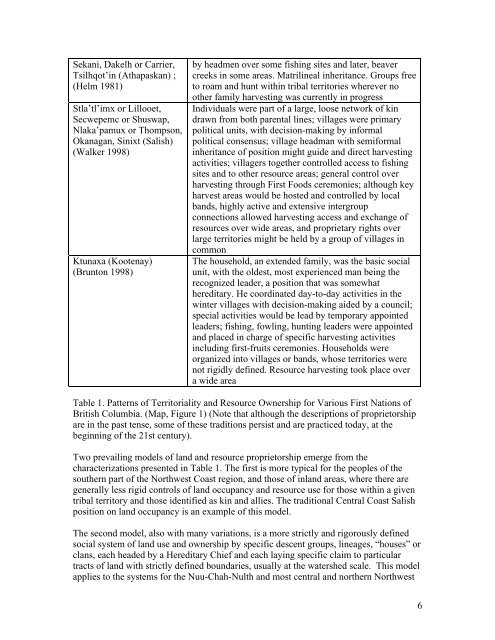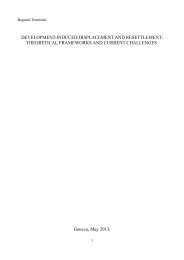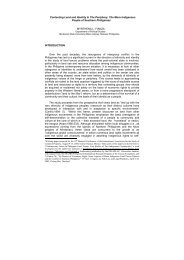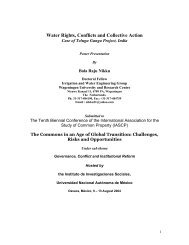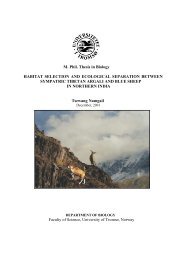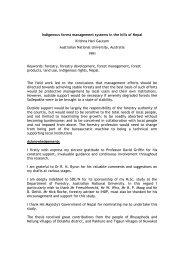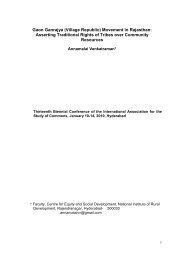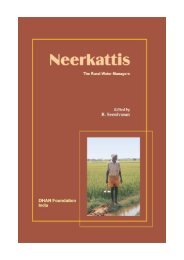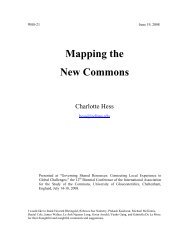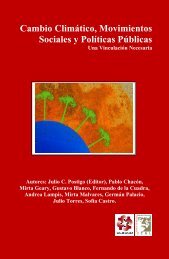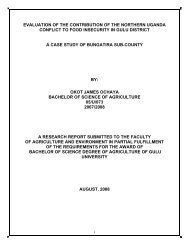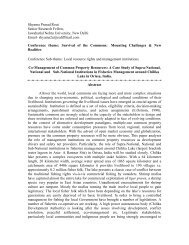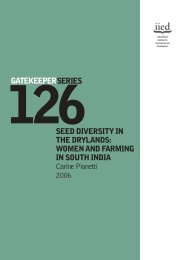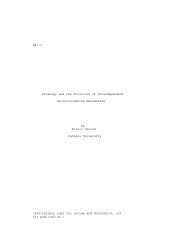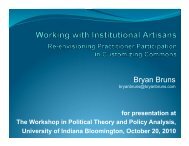Occupying the Land - Digital Library Of The Commons
Occupying the Land - Digital Library Of The Commons
Occupying the Land - Digital Library Of The Commons
You also want an ePaper? Increase the reach of your titles
YUMPU automatically turns print PDFs into web optimized ePapers that Google loves.
Sekani, Dakelh or Carrier,Tsilhqot’in (Athapaskan) ;(Helm 1981)Stla’tl’imx or Lillooet,Secwepemc or Shuswap,Nlaka’pamux or Thompson,Okanagan, Sinixt (Salish)(Walker 1998)Ktunaxa (Kootenay)(Brunton 1998)by headmen over some fishing sites and later, beavercreeks in some areas. Matrilineal inheritance. Groups freeto roam and hunt within tribal territories wherever noo<strong>the</strong>r family harvesting was currently in progressIndividuals were part of a large, loose network of kindrawn from both parental lines; villages were primarypolitical units, with decision-making by informalpolitical consensus; village headman with semiformalinheritance of position might guide and direct harvestingactivities; villagers toge<strong>the</strong>r controlled access to fishingsites and to o<strong>the</strong>r resource areas; general control overharvesting through First Foods ceremonies; although keyharvest areas would be hosted and controlled by localbands, highly active and extensive intergroupconnections allowed harvesting access and exchange ofresources over wide areas, and proprietary rights overlarge territories might be held by a group of villages incommon<strong>The</strong> household, an extended family, was <strong>the</strong> basic socialunit, with <strong>the</strong> oldest, most experienced man being <strong>the</strong>recognized leader, a position that was somewha<strong>the</strong>reditary. He coordinated day-to-day activities in <strong>the</strong>winter villages with decision-making aided by a council;special activities would be lead by temporary appointedleaders; fishing, fowling, hunting leaders were appointedand placed in charge of specific harvesting activitiesincluding first-fruits ceremonies. Households wereorganized into villages or bands, whose territories werenot rigidly defined. Resource harvesting took place overa wide areaTable 1. Patterns of Territoriality and Resource Ownership for Various First Nations ofBritish Columbia. (Map, Figure 1) (Note that although <strong>the</strong> descriptions of proprietorshipare in <strong>the</strong> past tense, some of <strong>the</strong>se traditions persist and are practiced today, at <strong>the</strong>beginning of <strong>the</strong> 21st century).Two prevailing models of land and resource proprietorship emerge from <strong>the</strong>characterizations presented in Table 1. <strong>The</strong> first is more typical for <strong>the</strong> peoples of <strong>the</strong>sou<strong>the</strong>rn part of <strong>the</strong> Northwest Coast region, and those of inland areas, where <strong>the</strong>re aregenerally less rigid controls of land occupancy and resource use for those within a giventribal territory and those identified as kin and allies. <strong>The</strong> traditional Central Coast Salishposition on land occupancy is an example of this model.<strong>The</strong> second model, also with many variations, is a more strictly and rigorously definedsocial system of land use and ownership by specific descent groups, lineages, “houses” orclans, each headed by a Hereditary Chief and each laying specific claim to particulartracts of land with strictly defined boundaries, usually at <strong>the</strong> watershed scale. This modelapplies to <strong>the</strong> systems for <strong>the</strong> Nuu-Chah-Nulth and most central and nor<strong>the</strong>rn Northwest6


